Today, let’s delve into important information about sourcing goods from China to Australia. Here’s what we’ll cover:


How to ensure Compliance with Australian Customs Regulations?
According to Australian Border Force (ABF), you don’t need an import license for import from China to Australia, but there can be requirements covering aspects like valuation, origin, concession, and labeling depending on the nature of your goods. Here are six import requirements:
1. Make a declaration to the Australian customs
If your imported goods have a value under or equal to AUD1,000, in which case no import duties will be charged generally (except tobacco & alcohol), self-assessed clearance (SAC) declarations can be applied, which can only be lodged electronically through the Integrated Cargo System (ICS).
But if your goods arrive through international mail / as unaccompanied personal effects / under a carnet, then you are not allowed to use SAC declarations.
For imported goods whose value is over AUD1, 000, you have to make an import declaration and pay the relevant import duties.
2. Identify Prohibited Products
You need to know that some items are absolutely prohibited from being imported by the Australian government. If you’re found importing prohibited items without proper permits and related documents, you could face hefty fines, or even worse——up to 10 years in prison. Check the list of prohibited items published by the ABF to see if your items can be imported.
3. Clarify the origin of your goods
When you perform importation in Australia, you have to clarify the origin of your goods.
On one hand, it’s to prevent people from forging the origin of goods to gain unfair advantages, and on the other hand, it’s to determine whether your goods meet the conditions of special trade agreements and whether they can enjoy tariff preferences.
Between China and Australia, there’s a China-Australia Free Trade Agreement (ChAFTA). Most products imported from China to Australia are duty-free under this agreement, but to get this tariff benefit, you need to have a Certificate of Origin (COO).
Note:The China-Australia Free Trade Agreement only exempts tariffs. Import processing fees or Goods and Services Tax (GST) still apply to imported goods from China to Australia.
4. Label your products with trade descriptions
Under the Commerce (Trade Descriptions) Act 1905 (the Act) and the Commerce (Trade Descriptions) Regulation 2016, certain goods should be proper labeled with a trade description so that they can be imported into Australia.
Generally, the trade description must meet the following specific standards:
- Be in English and in legible characters.
- Include the name of the origin country (e.g. China or PRC).
- Include a true description of the goods, if required.
- Be in the form of a principal label or brand attached in a prominent position.
5. Apply for an ABN
ABN is the abbreviation of Australian Business Number, an 11 digit number used to identify your business to your customers, suppliers, and the government.
ABN is related to your tax number. When importing to Australia, you need to provide your ABN to the customs so that you can register for tax purposes. You can apply for your ABN for free on the Business Registration Service page of the Australian government website as long as you are entitled to an ABN.
6. Comply with product safety standards and substance restrictions
Many products such as electronics, vehicles, or textiles that you imported from China to Australia will be covered by one or more safety standards or substance restrictions.
Importing products in violation of safety products and substance restrictions into Australia will be deemed as an offense, which may lead to a forced recall or a huge number of penalties. To ensure compliance in this aspect, you need to check the mandatory safety standards published by the Australian government on the Product Safety Australia website.
How much is the import tax from china to australia?
Knowing how to calculate import duties from China to Australia is significant to an importer, it’ll help you to estimate your profit margin and determine your product price on a more precise basis.
1. Calculate customs value
Under most circumstances, the customs value is calculated on the basis of the transaction value of your goods.
The optional calculating methods of customs value include:
- Identical goods value.
- Similar goods value.
- Deductive value.
- Computed value.
- Fall-back value.
Calculation of customs value can be complicated, so I suggest you seek some advice from a professional customs broker or freight forwarder directly before importing.
2. Calculate import duties
The calculation formula: Customs Duty = Import Duty Rate x Customs Value. The import duty rates from China to Australia usually range from 0% to 10%. You can check the FTA portal to know your specific tariff rate.
3. Calculate Goods and Service Tax (GST)
GST stands for Goods and Service Tax. Most products valued at over 1000 Australian dollars require payment of GST, unless they meet certain special exemption conditions.
Normally GST is calculated on a 10% basis, and it is the sum of the following values related to the imported goods:
- Customs value (usually the FOB price).
- Customs Duty (usually 0% – 10% of the customs value).
- Cost of shipping to Australia (paid and payable).
- Shipping insurance (paid and payable).
4. Calculate your IPC
IPC stands for Import Processing Charge, and it’s typically only levied on goods valued over 1000 US dollars.
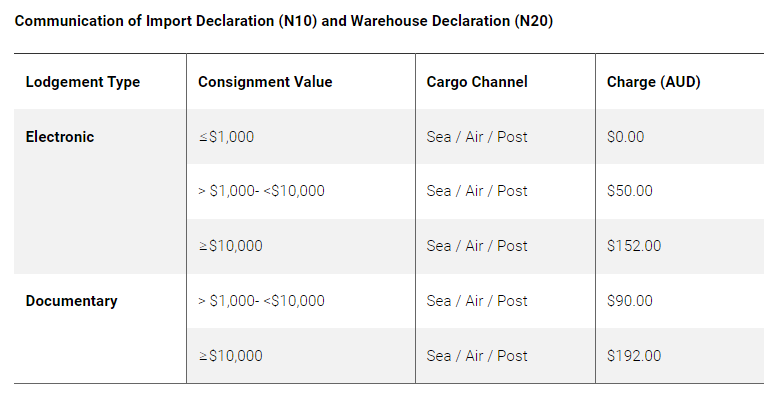
The charge rate will vary with the lodgement type and customs value. If declarations are lodged electronically, goods whose value is above $1,000 but under $10,000 will be charged $50; goods whose value is above $10,000 will be charged $152.
If declarations are lodged documentarily, goods whose value is above $1,000 but under $10,000 will be charged $90; goods whose value is above $10,000 will be charged $192.
How to Ship Products from China to Australia?
There are 3 options for shipping your product back from China to Australia: sea transport, air transport, and express.
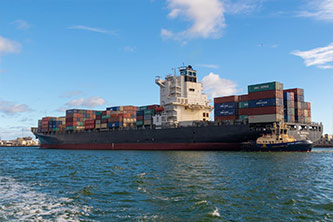
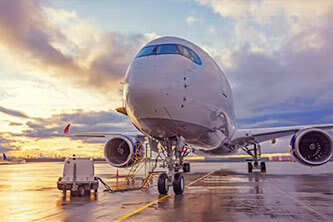
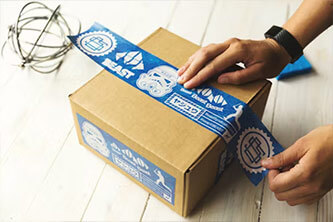
Sea freight is the most affordable option and is the choice of most importers. It usually takes at least one month for goods to ship from China to Australia. Air freight is very fast, with delivery to the door taking only 10-15 days. Express shipping is suitable for small packages and urgent deliveries.
Now, let’s calculate the specific shipping costs. Note that the USD to RMB exchange rate for the following prices is 7.
- When opting for air freight, Air freight cost = Goods weight * Air freight rate.
The air freight rate varies and depends on whether it’s to the airport or to the door. You’ll need to ask your freight forwarder for specific details.
For example, if you’re shipping a batch of cups weighing 300kg and occupying 0.3cbm from Shanghai Airport in China to Sydney Airport in Australia, they can typically arrive at the airport in about two to three days. The air freight rate is $2.86/kg (to port), so the air freight cost = cup weight * air freight rate = 300kg * $2.86/kg = $858.
The goods have two types of weights: actual weight and DIM weight. When calculating, we take the greater of the two. Here, the weight of the cup is based on the actual weight, because the actual weight of 300kg is greater than the DIM weight of 167kg.
However, if they’re to be transported to your warehouse in Sydney, the air freight rate is usually higher, let’s say $5/kg (to door) . Then the air freight cost = $5 x 300kg = $1500.
- If using sea freight, there are two types of container loading methods: LCL and FCL, each with different prices.
If you have a batch of cups weighing 2500kg and with a volume of 15cbm to be transported from Ningbo Port in China to Melbourne Port in Australia, since the cargo volume is less than 20cbm, LCL is usually used.
The price of LCL is usually calculated based on volume. Generally, the larger the volume of your cargo, the cheaper the unit price of LCL. For example, the unit price of LCL for 15cbm cups might be $70/cbm, while for 10cbm cups, it could be $80/cbm. The price of LCL fluctuates. You can easily estimate your shipping cost by asking your freight forwarder for the current price.
The freight cost of LCL goods = volume of goods * freight rate. Assuming the unit price of LCL for this batch of cups (i.e., the freight rate) is $70/cbm, the consolidated sea freight = 15cbm * $70 = $1050.
For goods over 20cbm, FCL is generally more cost-effective than LCL. Different from LCL, The price of FCL is usually calculated based on the whole container. The prices for FCL are as follows,
- 28cbm container fee includes
- Sea freight: $1050/container
- Inland fee: $571.43
- 68cbm container fee includes
- Sea freight: $2100/container
- Inland fee: $757.14
Get tailored shipping solutions from Jingsourcing
- Flexible shipping solution
- Competitive shipping quote
- Reliable freight forwarders
How to Find Chinese Suppliers to Import Products into Australia?
When importing from China to Australia, you need to find reliable Chinese suppliers.
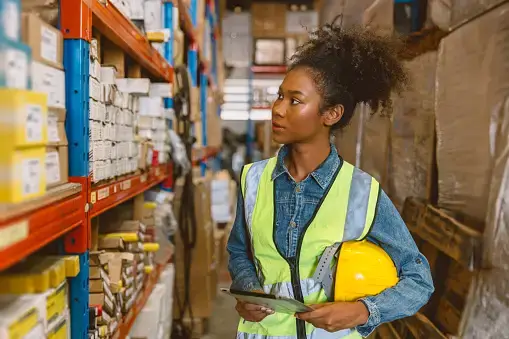
For new buyers, the most convenient and efficient way to find suppliers is through online wholesale platforms. Especially Alibaba, Alibaba is the largest international trade platform in China. Its search interface is well-optimized, similar to shopping on Amazon. You can easily find a huge variety of products and suppliers and directly contact them through RFQ.

In addition, contacting Jingsourcing online to help you find suppliers is a better choice. Our prices won’t be higher than wholesale websites, and the advantage over wholesale websites is that with our assistance, you can skip worrying about supplier qualifications and quality control. We provide you with end-to-end services, from product design, mold making, sampling, quality inspection, warehousing to transportation.
You can check this video to learn exactly how these supplier sourcing methods work if you’re interested.
How much does it cost to import to Australia?
Knowing the overall costs helps you to estimate your profit margin and determine your product price on a more precise basis, which mainly include:
- Shipment value.
- Shipping fees.
- Cargo insurance if there is.
- Import duties and taxes (mainly GST + IPC).
- Service fees charged by your customs broker or freight broker.
Example
Assume you’re importing a batch of wine at the value of 50,000 AUD from China to Australia. Other expenses are as follows:
- Customs duty rate = 3%
- Shipping cost = AUD 5,000
- Cargo insurance = AUD 100
- GST = 10% * (50,000 + 5,000 + 100) = AUD 5,510
- IPC = AUD 152 (declarations lodged electronically)
Total cost = 50000*3% + 50,000 + 5,000 + 100 + 5,510 + 152 = 62,262 AUD
FAQ
Do China and Australia have a free trade agreement?
On June 17, 2015, China and Australia signed the China-Australia Free Trade Agreement (ChAFTA) in Canberra, and it came into effect on December 20 of the same year. ChAFTA lowered tariffs on trade between China and Australia, boosting import and export trade between the two countries.
Is there import duty from China to Australia?
The tariffs on goods from China to Australia range from 0 to 10%, with most goods at 5%. Goods valued below 1000 Australian dollars are exempt from tariffs.

Leave A Comment